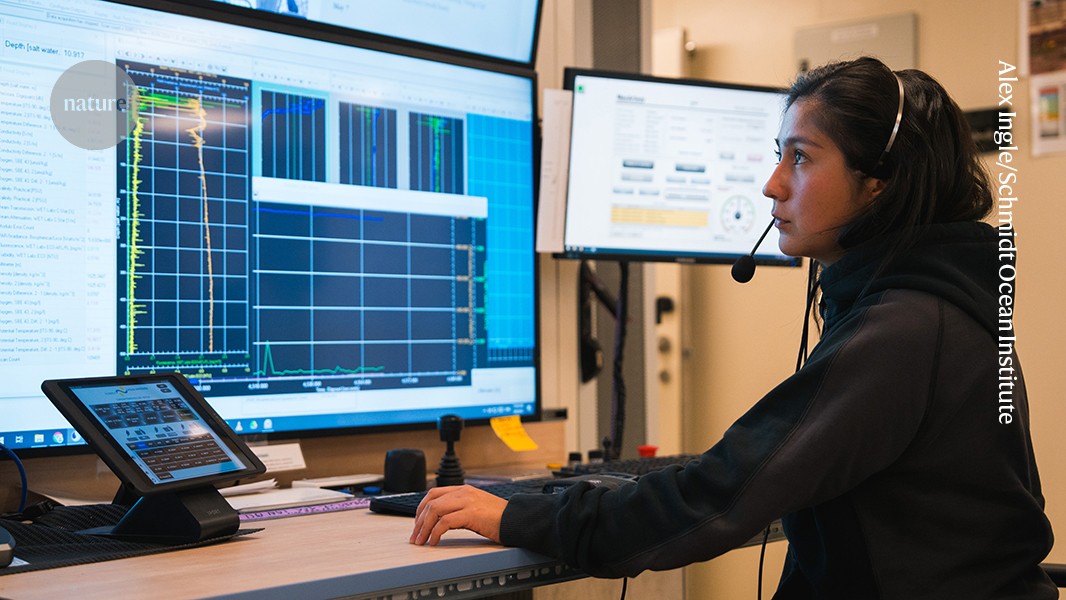“In the oceans are oxygen minimum zones (OMZs), which have little to no oxygen owing to various biological, chemical and physical processes. Although these zones are inhospitable to most forms of life, microorganisms often thrive there.
The Pacific Ocean is home to the largest OMZ in the world. Oceanographers are eager to learn more about the microbes that live in this particular zone, especially because it is expected to expand as a result of climate change. But studying OMZs is challenging: when water samples are brought to the surface, oxygen contamination can occur, either from atmospheric inputs when the samples are extracted or from materials in the sampling bottle.
In April, I joined a team of scientists on the research vessel Falkor (Too) to test new technologies for sampling water oxygen content and microbial communities. A year earlier, I’d gained what in Chile is known as a professional title, two years after my bachelor’s degree. My title was in geophysics at the University of Concepción. The team planned to sample at two locations in Chilean waters. I was an observer for the State of Chile on the expedition.
During the 37-day trip, I learnt how to operate some of this equipment, including a CTD device, which measures conductivity, temperature and depth in the ocean. In this photo, I’m using the CTD to examine properties of the water at various depths. Each property is represented by a different colour on the graph.
I fell in love with fieldwork, and now I want to pursue a career as a marine technician to explore other areas of the ocean. Seeing how team members from different parts of the world worked together and supported one another was a magical experience. It showed me a beautiful way to do science.”
This interview has been edited for length and clarity.


